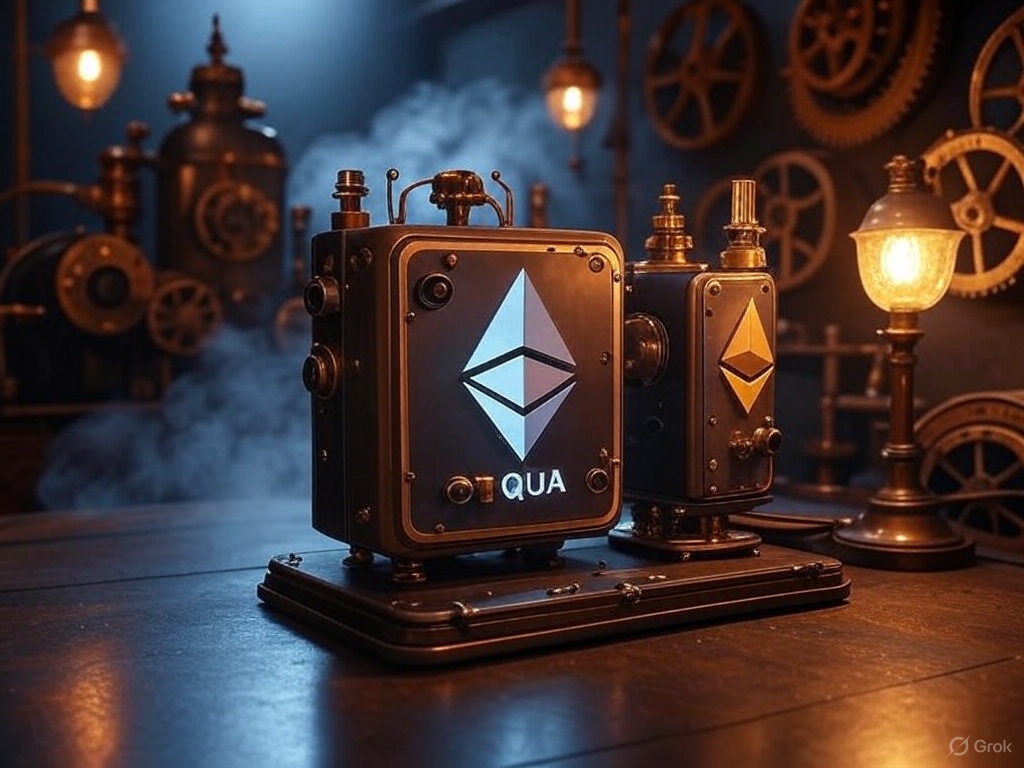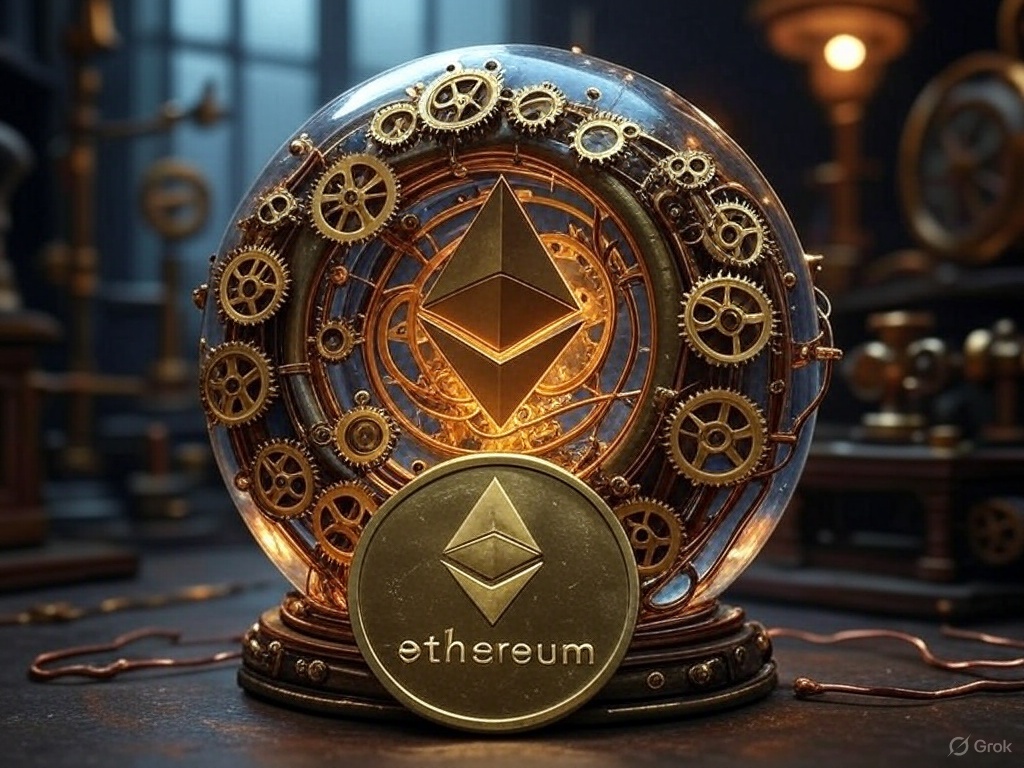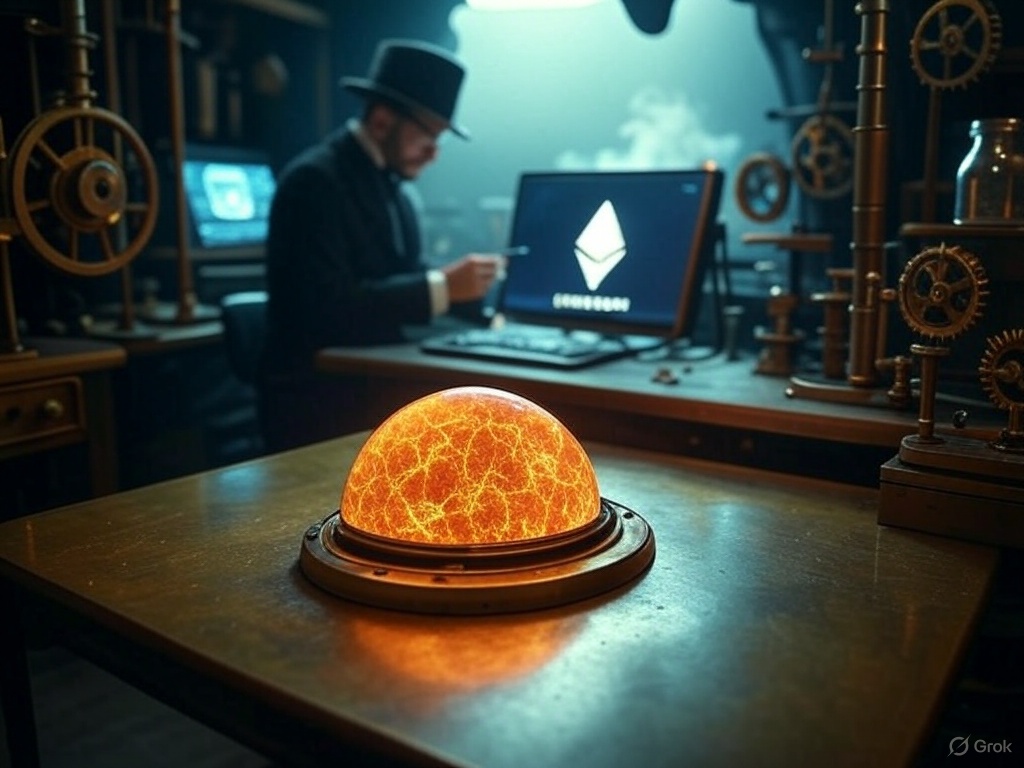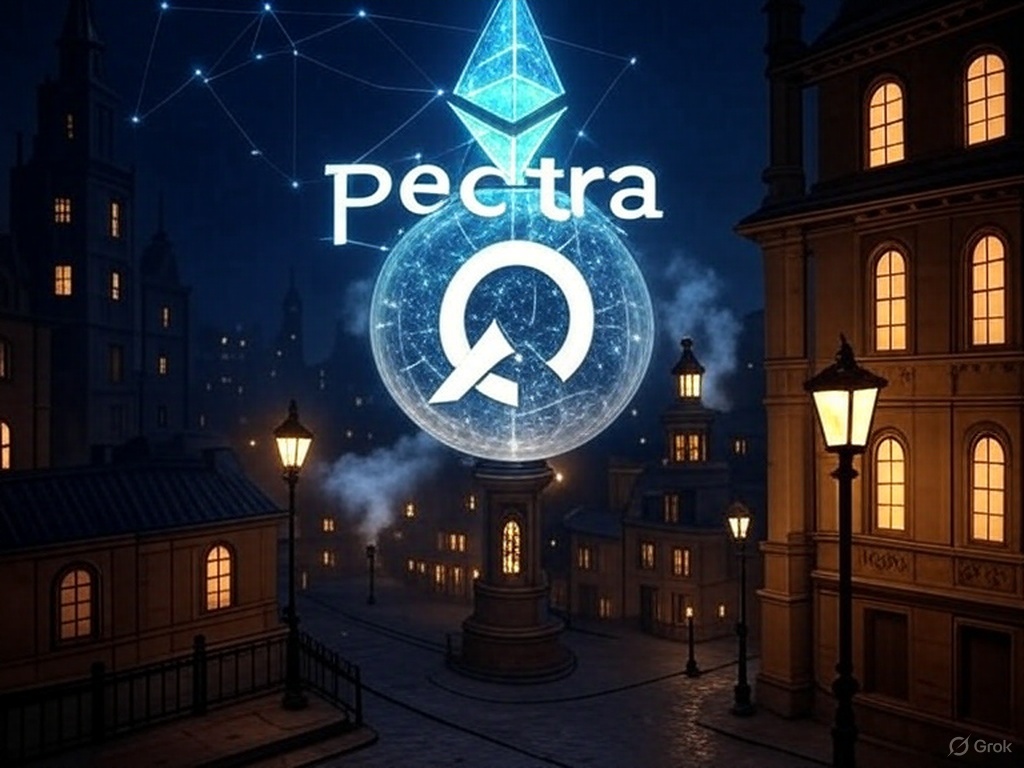On May 7, 2025, Ethereum’s mainnet activated the Pectra upgrade, described by developers as the most transformative since the shift to Proof-of-Stake in 2022.
 This upgrade, combining the Prague (execution layer) and Electra (consensus layer) hard forks, introduces 11 Ethereum Improvement Proposals (EIPs) that enhance wallets, validators, and Layer 2 (L2) solutions like Optimism and Arbitrum. For regular users, Pectra delivers smarter wallets, lower fees, and streamlined staking interactions.
This upgrade, combining the Prague (execution layer) and Electra (consensus layer) hard forks, introduces 11 Ethereum Improvement Proposals (EIPs) that enhance wallets, validators, and Layer 2 (L2) solutions like Optimism and Arbitrum. For regular users, Pectra delivers smarter wallets, lower fees, and streamlined staking interactions.
As a project deeply rooted in the Ethereum ecosystem, Quasacoin (QUA), the native token of the QUASA platform, stands to gain significantly from these improvements.
The QUASA team, staunch advocates of Ethereum’s technology, builds exclusively on this blockchain, leveraging its advancements to enhance their decentralized logistics and service platform. Here’s how Pectra impacts everyday users and amplifies the potential of Quasacoin.
Smarter Wallets with Account Abstraction (EIP-7702)
Pectra’s EIP-7702 introduces account abstraction, enabling Externally Owned Accounts (EOAs)—standard Ethereum wallets—to temporarily execute smart contract logic.
 This unlocks advanced features for users:
This unlocks advanced features for users:
- Transaction Batching: Users can combine multiple actions (e.g., approving and swapping tokens) into a single transaction, simplifying interactions with decentralized applications (dApps).
- Gas Sponsorship: Third parties, such as dApps, can cover gas fees, enabling gasless transactions.
- Flexible Gas Payments: Fees can be paid with ERC-20 tokens like USDC or DAI, not just ETH.
- Enhanced Security and Recovery: Features like social recovery (using trusted contacts to regain wallet access) and alternative key schemes improve wallet usability and safety.
For Quasacoin Users: QUASA, which facilitates decentralized logistics and service marketplaces, relies on Ethereum’s infrastructure for secure and transparent transactions.
 EIP-7702 allows QUASA’s users to interact with its platform more seamlessly. For instance, freelancers or logistics providers using QUA can batch payments and service agreements into one transaction, reducing complexity and costs.
EIP-7702 allows QUASA’s users to interact with its platform more seamlessly. For instance, freelancers or logistics providers using QUA can batch payments and service agreements into one transaction, reducing complexity and costs.
Gas sponsorship could enable QUASA to subsidize fees for new users, lowering barriers to entry for small businesses or independent workers.
Additionally, paying gas with QUA or stablecoins aligns with QUASA’s vision of a flexible, user-centric ecosystem, making its services more accessible to a global audience.
The QUASA team’s commitment to Ethereum ensures that these wallet enhancements are fully integrated into their platform, enhancing user experience and operational efficiency.
Lower Fees and Faster Transactions via L2 Scaling (EIP-7691)
Pectra builds on the Dencun upgrade’s blob transactions (EIP-4844) by doubling blob capacity from three to six per block (768 kilobytes). Blobs provide temporary data storage for L2 rollups, enabling cost-effective and high-throughput transactions.
 Key benefits include:
Key benefits include:
- Cheaper L2 Transactions: Increased blob capacity reduces costs for L2 solutions, making dApp interactions more affordable.
- Faster Confirmations: Higher throughput alleviates congestion, speeding up transaction processing.
- Expanded L2 Ecosystem: Enhanced data availability supports the launch of new rollups, broadening user options.
For Quasacoin Users: QUASA’s operations, such as smart contract-based service agreements and cross-border payments, benefit from L2 scalability.
 Lower fees on rollups like Optimism or Arbitrum, where QUASA transactions may occur, reduce costs for users paying with QUA for logistics or freelance services.
Lower fees on rollups like Optimism or Arbitrum, where QUASA transactions may occur, reduce costs for users paying with QUA for logistics or freelance services.
Faster transaction confirmations ensure that time-sensitive tasks, like real-time delivery tracking, are processed efficiently.
The team’s Ethereum-only approach ensures deep integration with L2 advancements, reinforcing QUA’s utility in a high-performance ecosystem.
Simplified Staking Interactions (EIP-7251, EIP-7002, EIP-6110)
 Pectra enhances Ethereum’s staking mechanics, making participation more accessible and efficient:
Pectra enhances Ethereum’s staking mechanics, making participation more accessible and efficient:
- Higher Validator Balance Limits (EIP-7251): The maximum effective balance for validators rises from 32 ETH to 2,048 ETH, allowing consolidation of stakes and reducing network overhead.
- Execution Layer Exits (EIP-7002): Validators can trigger exits and partial withdrawals directly from the execution layer, increasing flexibility for stakers.
- Faster Validator Activation (EIP-6110): Deposits now process on the execution layer, cutting activation times from ~12 hours to ~13 minutes (assuming no queue).
For Quasacoin Users: While QUA holders may not directly stake ETH, Ethereum’s staking improvements indirectly benefit the QUASA ecosystem. A more efficient staking system strengthens Ethereum’s security and decentralization, ensuring a robust network for QUASA’s smart contracts.
For instance, faster validator onboarding and flexible withdrawals could attract more institutional stakers, stabilizing the network and reducing volatility for QUA-based transactions. QUASA’s Ethereum-centric philosophy aligns with these staking enhancements, as a stronger Proof-of-Stake system supports the platform’s long-term reliability for users and service providers.
No Action Required for ETH or QUA Holders
Regular ETH holders and QUA holders need not take any action to benefit from Pectra. Balances remain unaffected, and both assets are fully compatible with the upgraded network. However, users should beware of scams claiming that ETH or QUA requires “upgrading” or transferring to new wallets—these are phishing attempts.
How Quasacoin Leverages Ethereum’s Ecosystem Growth
Quasacoin (QUA) is the backbone of QUASA’s decentralized platform, which connects service providers, freelancers, and logistics operators in a trustless, blockchain-based marketplace. By building exclusively on Ethereum, QUASA taps into the network’s unparalleled developer ecosystem, liquidity, and technological advancements.
 The Pectra upgrade amplifies QUA’s potential in several ways:
The Pectra upgrade amplifies QUA’s potential in several ways:
- Enhanced Platform Efficiency: Smarter wallets and lower L2 fees reduce friction for QUA transactions, enabling seamless payments for services like international shipping or freelance gigs. This aligns with QUASA’s mission to democratize access to decentralized services.
- Scalability for Growth: Pectra’s L2 optimizations allow QUASA to handle increased transaction volumes as its user base grows, supporting global adoption without compromising speed or cost.
- User-Centric Features: Account abstraction’s gas flexibility and recovery options make QUASA’s platform more approachable for non-crypto-native users, such as small businesses or individual contractors, who can pay with QUA or stablecoins.
- Network Reliability: Ethereum’s improved staking and validator efficiency ensure a secure and stable environment for QUASA’s smart contracts, fostering trust among users.
The QUASA team’s unwavering commitment to Ethereum reflects their belief in its vision as the leading platform for decentralized innovation. By harnessing Pectra’s advancements, QUASA strengthens QUA’s role as a utility token, driving adoption in logistics, freelancing, and beyond.
As Ethereum’s ecosystem evolves, QUASA’s strategic focus positions QUA to capitalize on future upgrades, such as the upcoming Fusaka upgrade in 2026, which will introduce Verkle trees and PeerDAS for further scalability.
Broader Implications for Users and Quasacoin
Pectra makes Ethereum more user-friendly and cost-effective, addressing pain points like high fees and complex transactions. For regular users, this means easier interactions with dApps, cheaper L2 transactions, and more secure wallets. For QUASA, Pectra is a catalyst for growth, enabling the platform to deliver a superior experience to its users while reinforcing QUA’s value proposition.
 The upgrade’s focus on L2 scalability and account abstraction aligns perfectly with QUASA’s goal of building an accessible, decentralized service economy.
The upgrade’s focus on L2 scalability and account abstraction aligns perfectly with QUASA’s goal of building an accessible, decentralized service economy.
As Ethereum competes with blockchains like Solana and BNB Chain, Pectra ensures it remains the go-to platform for dApps and institutional adoption. QUASA’s Ethereum-only approach positions QUA to benefit from this competitive edge, attracting developers and users to its ecosystem.
Also read: PARTNERSHIP ANNOUNCEMENT QUASA + Crypto.com
Looking Ahead
Pectra is a pivotal step in Ethereum’s roadmap, with the Fusaka upgrade (expected in 2026) set to introduce further optimizations like Verkle trees and full danksharding. For regular users, Pectra delivers immediate benefits: smarter wallets, lower L2 fees, and easier staking.
 For Quasacoin, it’s a springboard for growth, enhancing QUA’s utility within QUASA’s Ethereum-based ecosystem. The QUASA team’s visionary commitment to Ethereum ensures that QUA remains at the forefront of decentralized innovation, leveraging Pectra’s advancements to build a more efficient, accessible, and scalable platform for the future.
For Quasacoin, it’s a springboard for growth, enhancing QUA’s utility within QUASA’s Ethereum-based ecosystem. The QUASA team’s visionary commitment to Ethereum ensures that QUA remains at the forefront of decentralized innovation, leveraging Pectra’s advancements to build a more efficient, accessible, and scalable platform for the future.
Disclaimer: Cryptocurrency investments carry risks. Always conduct thorough research and exercise caution against scams. Verify information through trusted sources before making financial decisions.
Sources: Information on Pectra’s features and benefits is drawn from Ethereum community updates and developer announcements, including details on EIPs like 7702, 7691, 7251, 7002, and 6110. Quasacoin’s integration with Ethereum is based on QUASA’s public statements and platform documentation.
Author: Slava Vasipenok
Founder and CEO of QUASA (quasa.io) - Daily insights on Web3, AI, Crypto, and Freelance. Stay updated on finance, technology trends, and creator tools - with sources and real value.
Innovative entrepreneur with over 20 years of experience in IT, fintech, and blockchain. Specializes in decentralized solutions for freelancing, helping to overcome the barriers of traditional finance, especially in developing regions.
This is not financial or investment advice. Always do your own research (DYOR).






